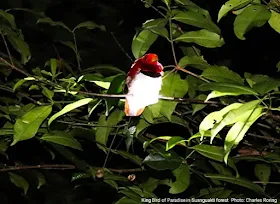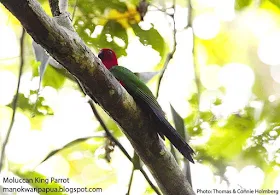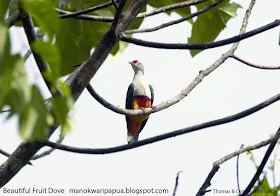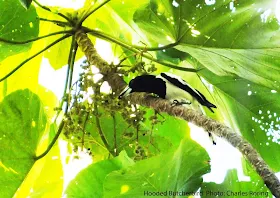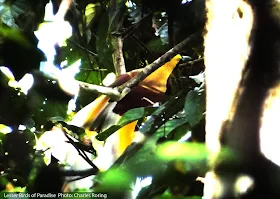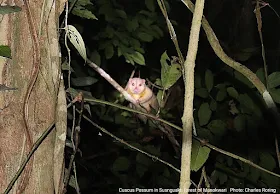As a matter of fact, there are a lot of other birds that have got beautiful colors and sounds. Some of them include Eclectus Parrot, Red-cheeked Parrot, Black-capped Lory, Palm Cockatoo, Sulphur-crested Cockatoo, Coconut Lorikeet, Great-billed Parrot, Pinon Imperial Pigeon, Pied Imperial Pigeon, Western-crowned Pigeon, and Pink-spotted Fruit Dove, Rufous-bellied Kookaburra, Yellow-billed Kingfisher, Puff-backed Meliphaga, and a lot more. Birdwatching activities in Raja Ampat can be done all year round.
Birds are very active in the mornings and in the afternoons. Birds also like to come out of their hiding places in good sunny days after heavy rains. To watch them a good pair of binoculars is needed. I recommend Leica, Swarovski, or Nikon Monarch 10×42, 12×50 roof prism binoculars. There is a good place in Raja Ampat where visitors can enjoy birdwatching easily. Its name is Warduwer beach.
When I guide tourists at this beach, I usually bring my Kinglux 20-60×60 mm spotting scope. It is a good device for watching birds that sit on the branch of tall trees.
 |
| Beach Kingfisher |
There are a lot of places which tourists can visit to enjoy birdwatching. One that I highly recommend is Warduwer beach. There is a beach resort being built at this place. Its name is Raja Ampat Paradise Resort. In the mornings a lot of birds like to sit on the branches of trees in the area such as Eastern Osprey, White-breasted Wood Swallow, Torresian Crow, Spangled Drongo, and Singing Starling. In my recent visits to Warduwer beach, Sandpiper, Lesser Crested Tern and Dusky Scrubfowl.
Snorkeling and Freediving
Usually, after enjoying birdwatching, I do some snorkeling and freediving. The coral reef of this beach is very beautiful. Pink Anemonefish, Three-spots Dascyllus, Butterflyfish, Moorish Idol, Parrotfish, Striped Surgeonfish and Grouper are some of the many fish live in this water.
 |
| Coral Reef and Fish in Raja Ampat |
If you plan to visit Raja Ampat and wants me to organize your tour, please, contact me by email to: peace4wp@gmail.com or by whatsapp to: +6281332245180.



